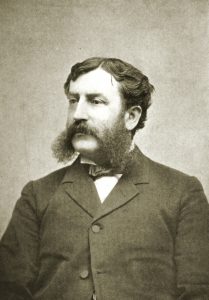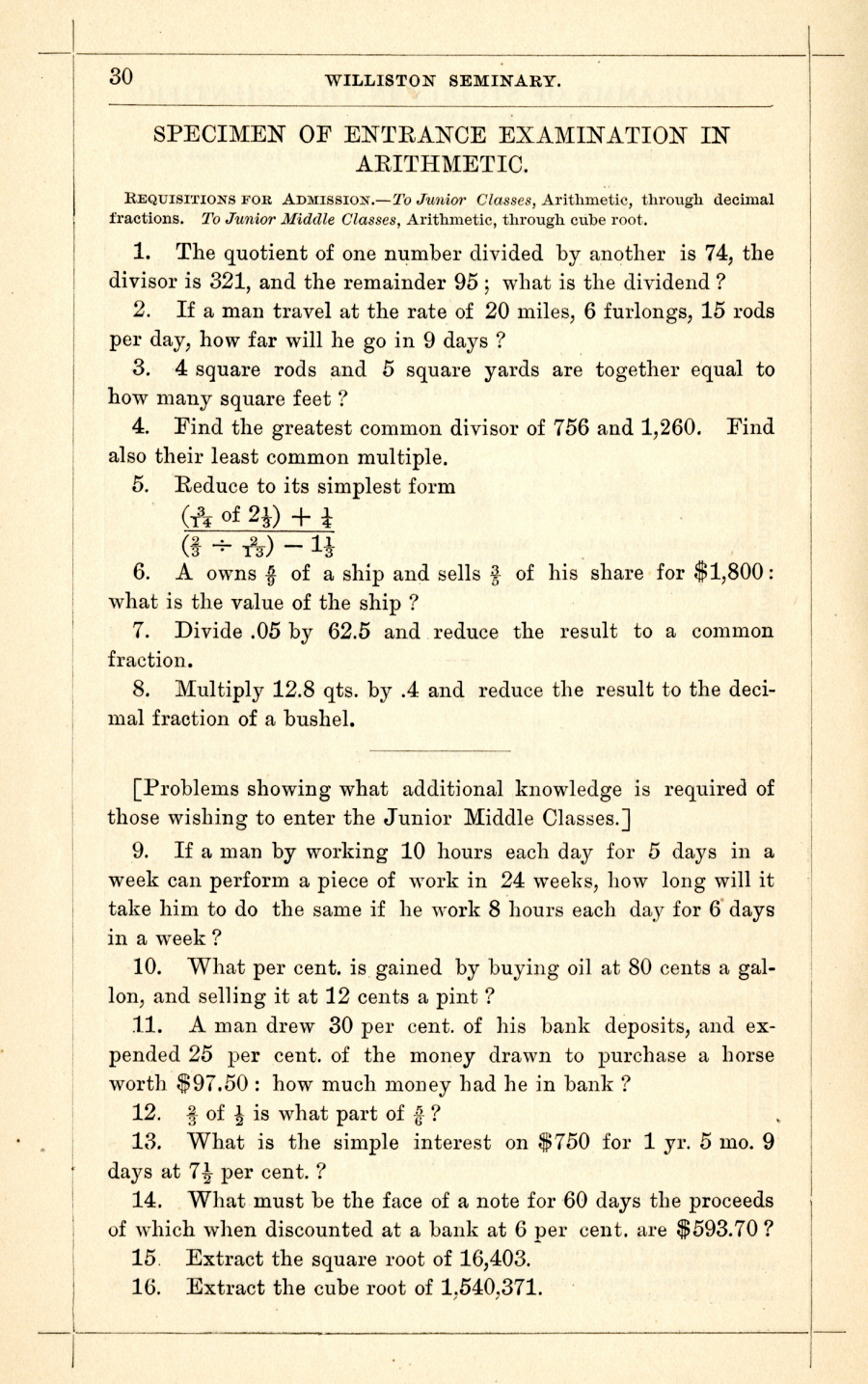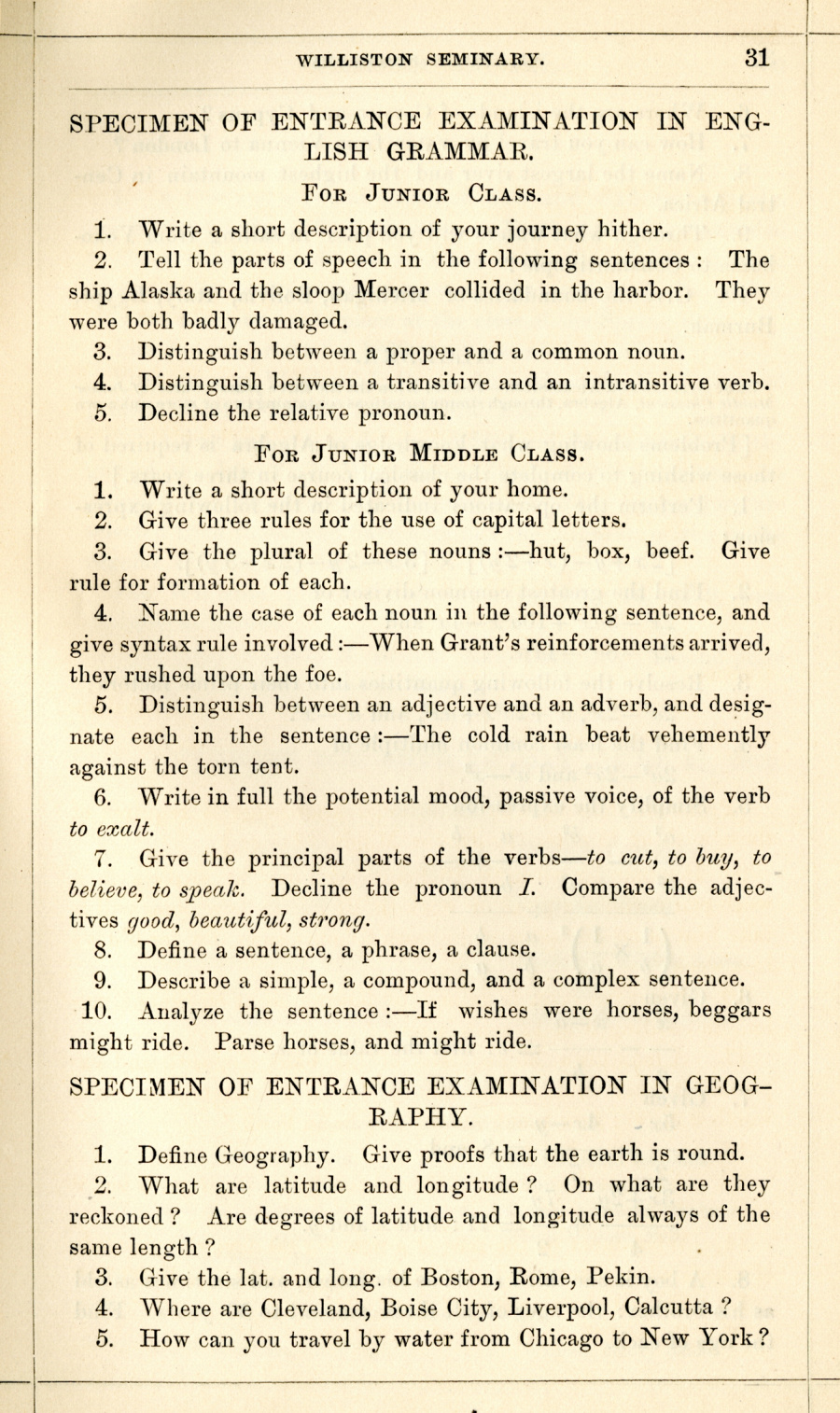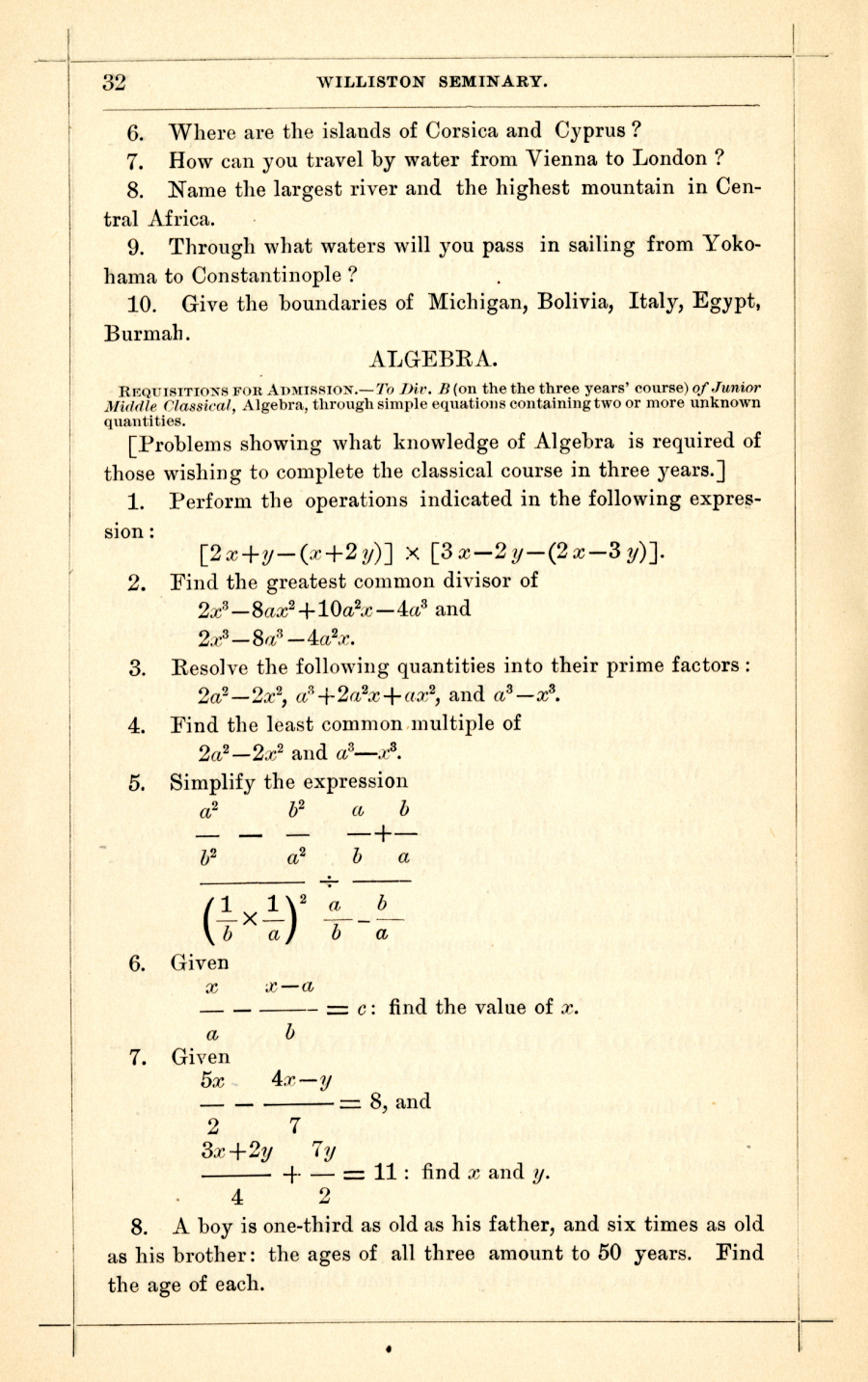
1879. Williston Seminary, transitioning not altogether painlessly into the post-Samuel Williston era, had a new Principal, Joseph Whitcomb Fairbanks. Fairbanks was finishing up his first year, having replaced the unfortunate James Morris Whiton, who had failed to finish his second. Innovation was not Fairbanks’ strong suit, His greatest talent lay in getting along, a skill that had escaped his predecessor. (Yes, class, we’re setting you up for a future story!)
But in that first year, he had an idea: printing the Williston entrance examination in the Annual Catalogue. It had not been done before. For a variety of good reasons, including the possibility of scaring away potential candidates, it would not be repeated. But 138 years later, it opens a window on what the entering Junior (i.e., 9th grade) or Junior Middler (10th grade) was expected to know.
Note that this is a “specimen” exam. The actual test would have had different questions. But try them! Would you have been admitted to Williston in 1879? (Please click images to enlarge.)


 One confesses that many of these questions seem written to be annoying, demanding multiple conversions of equivalent measures or, in the geography section, asking for a deal of trivial knowledge. To travel from Vienna to London by water requires cruising down the Danube some 1,000 miles in the wrong direction, east to the Black Sea. And so on. But how did you do? (You weren’t expecting an answer key, were you?) Continue reading
One confesses that many of these questions seem written to be annoying, demanding multiple conversions of equivalent measures or, in the geography section, asking for a deal of trivial knowledge. To travel from Vienna to London by water requires cruising down the Danube some 1,000 miles in the wrong direction, east to the Black Sea. And so on. But how did you do? (You weren’t expecting an answer key, were you?) Continue reading


